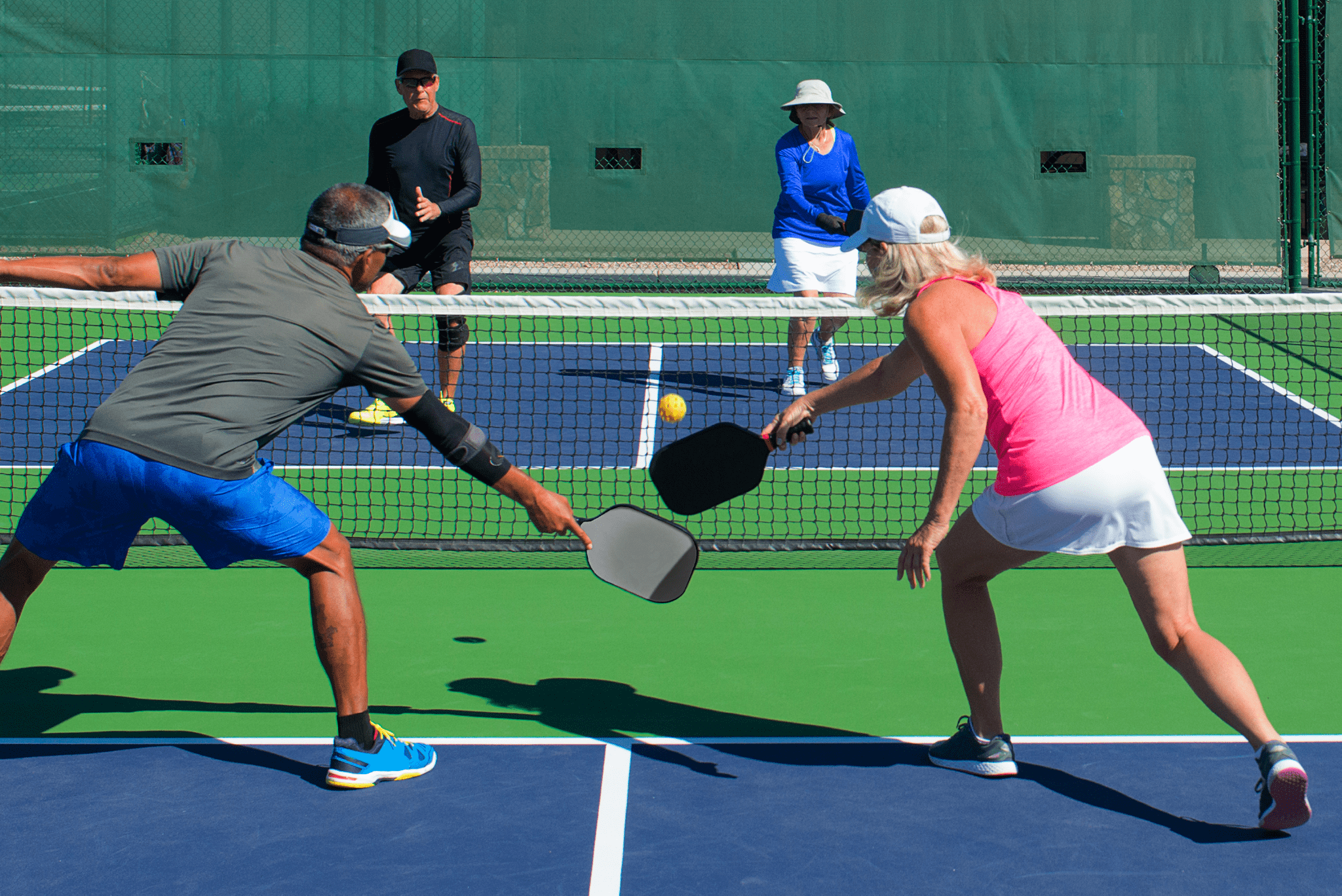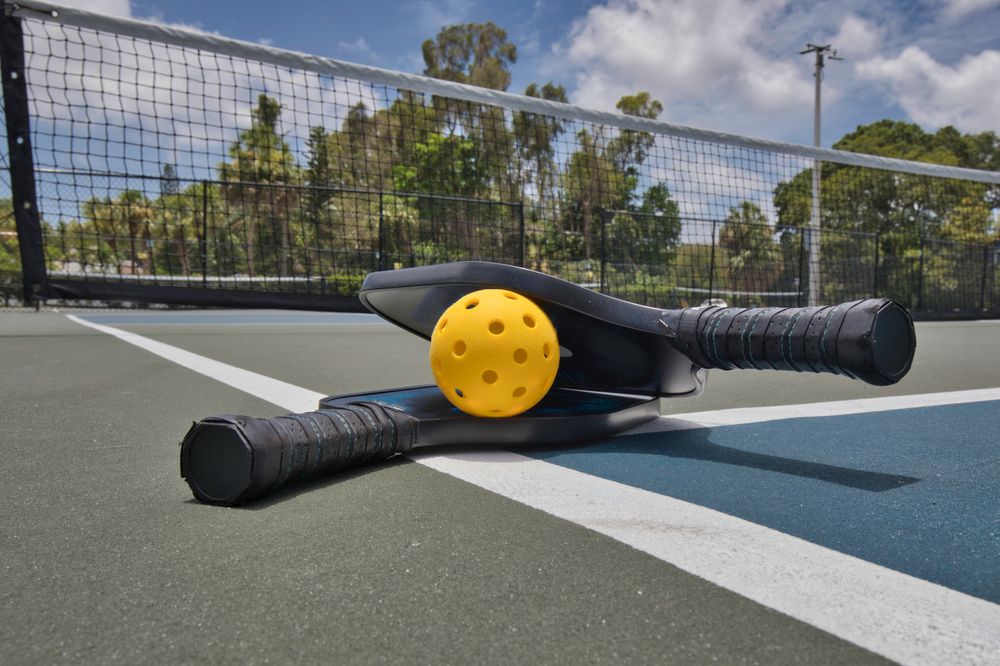Exploring the Numerous Choices for Yard Pickleball Courts: A Property owner's Guide to Setup and Upkeep
As the popularity of pickleball proceeds to climb, many house owners are taking into consideration the installation of a devoted court in their yards. What are the best techniques to ensure your court continues to be functional and excellent over time?
Assessing Your Room
When thinking about the addition of a pickleball court to your backyard, how can you properly assess the available room? The primary step is to determine the measurements of your lawn, guaranteeing that you have sufficient area for a regulation-sized court, which measures 20 feet by 44 feet for doubles play (backyard pickleball court). It's important to represent extra room surrounding the court to assist in activity and boost gameplay, usually suggesting an added 10 feet on each side
Following, review the surface of your lawn. A degree surface is perfect for a pickleball court, as unequal ground can lead to security risks and influence gameplay. If your yard inclines or has obstructions such as trees or landscaping functions, consider exactly how these aspects will certainly impact your court's area and use.
Picking Court Surfaces
Choosing the appropriate surface area for your backyard pickleball court is vital for optimizing performance and player safety. The choice of court surface area not just affects gameplay however also influences the durability and maintenance of the court.
Usual alternatives include asphalt, concrete, and specialized sports floor tiles. Asphalt and concrete provide a hard, sturdy surface that can tear and endure the wear of routine play. However, they can be ruthless on gamers' joints, causing enhanced danger of injury. To mitigate this, numerous homeowners select supported surfaces or specialized coatings that use some level of shock absorption.
Additionally, modular sporting activities ceramic tiles are a progressively prominent choice. These tiles are developed specifically for pickleball and offer exceptional traction, drainage, and shock absorption. They can additionally be installed over existing surface areas, making them a functional alternative for many yards.
When picking a surface area, think about variables such as climate, spending plan, and desired level of play. A well-chosen court surface will certainly boost your having fun experience while making sure safety and security and longevity for your backyard pickleball court. Making a notified decision is necessary for making best use of satisfaction and efficiency.
Installment Refine Overview
Installing a yard pickleball court commonly involves several essential steps that make sure both performance and durability. The primary step is to pick a suitable location in your yard, thinking about variables such as proximity, sunshine, and water drainage to your home. Once the website is picked, clear the area of any kind of plants, rocks, or debris to develop a level foundation.
Next, outline the dimensions of the court, which ought to be 20 feet vast by 44 feet long for a standard pickleball court (backyard pickleball court). After noting the borders, excavate the area to a deepness of around 4 to 6 inches, making sure correct water drainage. This excavation will certainly permit a stable sub-base
Following this, set up a base layer of gravel or smashed stone to promote drain and stability. Portable this layer thoroughly prior to proceeding. After the base is set, you can put a concrete slab or mount your picked court surface area products, guaranteeing they follow the dimensions.
Upkeep Tips and Methods
To ensure the longevity and performance of your backyard pickleball court, routine maintenance is vital. Utilize a mop or leaf blower to maintain the court tidy, removing leaves, dust, and other particles that can influence gameplay.

Furthermore, monitor your court's water drainage to stop water merging, which can cause surface damages over time. Make sure that the bordering landscape routes water far from the court. If your court is made of asphalt or concrete, think about sealing the surface area every few years to enhance durability.
Lastly, develop a routine schedule for upkeep tasks, consisting of seasonal checks and fixings, to maintain your court in optimal problem and ready for play. Routine maintenance not just enhances performance but additionally lengthens the life of your yard pickleball court.
Price Considerations and Budgeting
When planning for a yard pickleball court, comprehending the different expense factors to consider is critical for efficient budgeting. The overall expense can differ dramatically based on aspects such as court size, surface product, and setup complexity.
Initial expenses generally include site preparation, which may entail grading and leveling the land, complied with by the option of surface-- options array from asphalt to concrete, you can try here with each material influencing both long-term and ahead of time expenses. As an example, concrete offers resilience however features a higher price, while asphalt may supply a more affordable choice.
In addition, think about the costs related to secure fencing, illumination, and accessories such as paddles and internet - backyard pickleball court. Fencing is crucial for maintaining balls contained, and lights can expand playtime into the evening hours

Conclusion
Finally, the installment of a yard pickleball court involves cautious factor to consider of room, surface area materials, and maintenance needs. Picking proper dimensions, such as the recommended 20' x 44', along with sturdy surface alternatives like asphalt, concrete, or modular sporting activities tiles, contributes to a functional field. Normal maintenance and surveillance for wear are important to ensure the court's durability and ideal efficiency, eventually boosting the leisure experience for all customers.
A level surface area is perfect for a pickleball court, as uneven ground can lead to security hazards anonymous and influence gameplay. An appropriate court surface area will improve your playing experience while guaranteeing security and long life for your yard pickleball court.Next, lay out the dimensions of the court, which should be 20 feet wide by 44 feet long for a common pickleball court. After the base is set, you can put a concrete slab or mount your chosen court surface area materials, ensuring they adhere to the measurements.
In final thought, the installment of a yard pickleball court involves careful factor to consider of room, surface materials, and maintenance demands.
Comments on “DIY Backyard Pickleball Court: Important Tips for a Successful Installation”